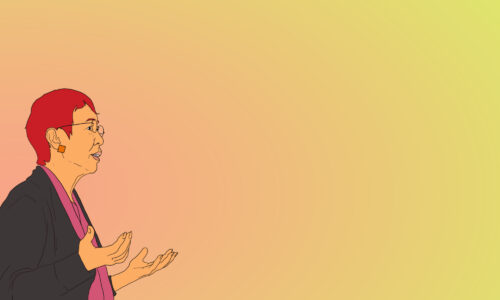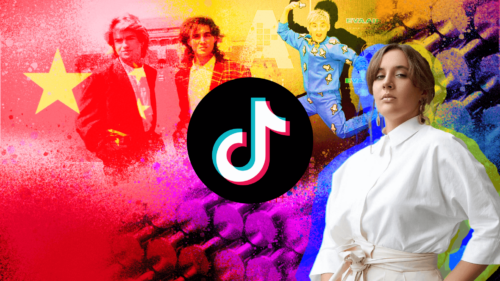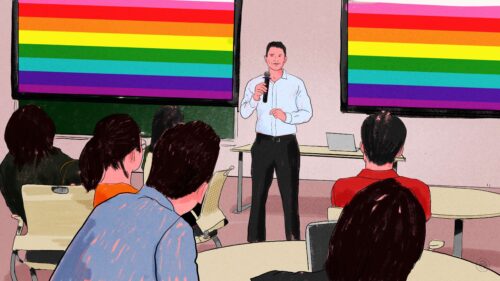‘The government is powerful, but it can’t shut us down’: Lü Pin on China’s #MeToo movement
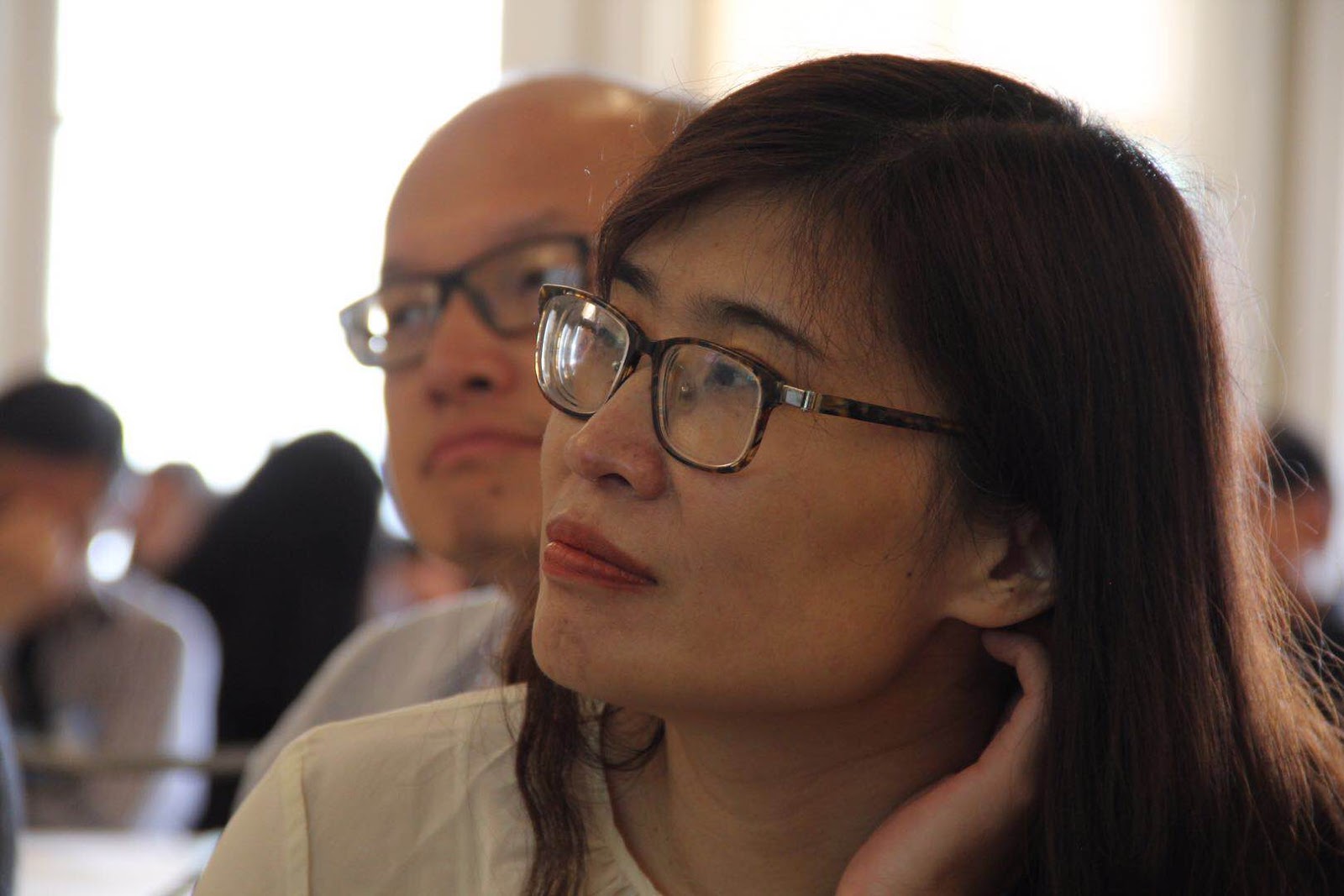
Lü Pin 吕频 is a leading feminist activist currently based in the U.S. She has been working on women’s rights issues for more than 20 years. In 2009, she founded Feminist Voices (女权之声 nǚquánzhīshēng), among the most influential communication platforms on feminist activism in China, which was shut down by the government on International Women’s Day in March 2018. In 2011, Lü Pin began working closely with other activists in developing a national feminist network to promote women’s rights. In 2016, after relocating to the U.S., she co-founded a new organization in New York to support the feminist movement in China, including the #MeToo movement.
As one of the leading figures and thought leaders in China’s feminist discourse, Lǚ Pín 吕频 has been a close observer of the #MeToo movement’s development since the tumultuous events of January 2018. On International Women’s Day this year, we published an interview with her, in which she cautiously warned us that “the movement is clearly losing momentum” despite denials from some optimistic women’s rights activists. Unsure of when the next wave of collective activism will take place, Lü told us that the buzz around the movement had visibly disappeared and the energy had been exhausted.
Roughly four months after the interview, we spoke with Lü Pin again about how the ongoing case of Liú Qiángdōng 刘强东 ignited a necessary conversation about the victim-blaming reflex of rape culture, the nature of intersectionality in today’s China between the #MeToo movement and others like LGBTQ rights, and how the movement should progress.
From your perspective, what were the origins of the #MeToo movement in China?
The visible starting point of the #MeToo movement in China was when Luo Xixi made the first #MeToo accusation in early October 2018. Naturally, as she herself noted, her actions were inspired and influenced by the #MeToo movement in the U.S.
But from a longer-term perspective, the seeds of the #MeToo movement were sown as far back as 2012, when young Chinese people who were very interested in feminism began taking to the internet to discuss the problem of sexual harassment. They started by identifying the problem as it existed in the realms of education and employment. So the movement started with a wave of young activists — sexual harassment was a youth issue. Several years later, with the rise of the #MeToo movement in the U.S., this discussion and interest in sexual harassment among young Chinese feminists was ultimately translated into action.
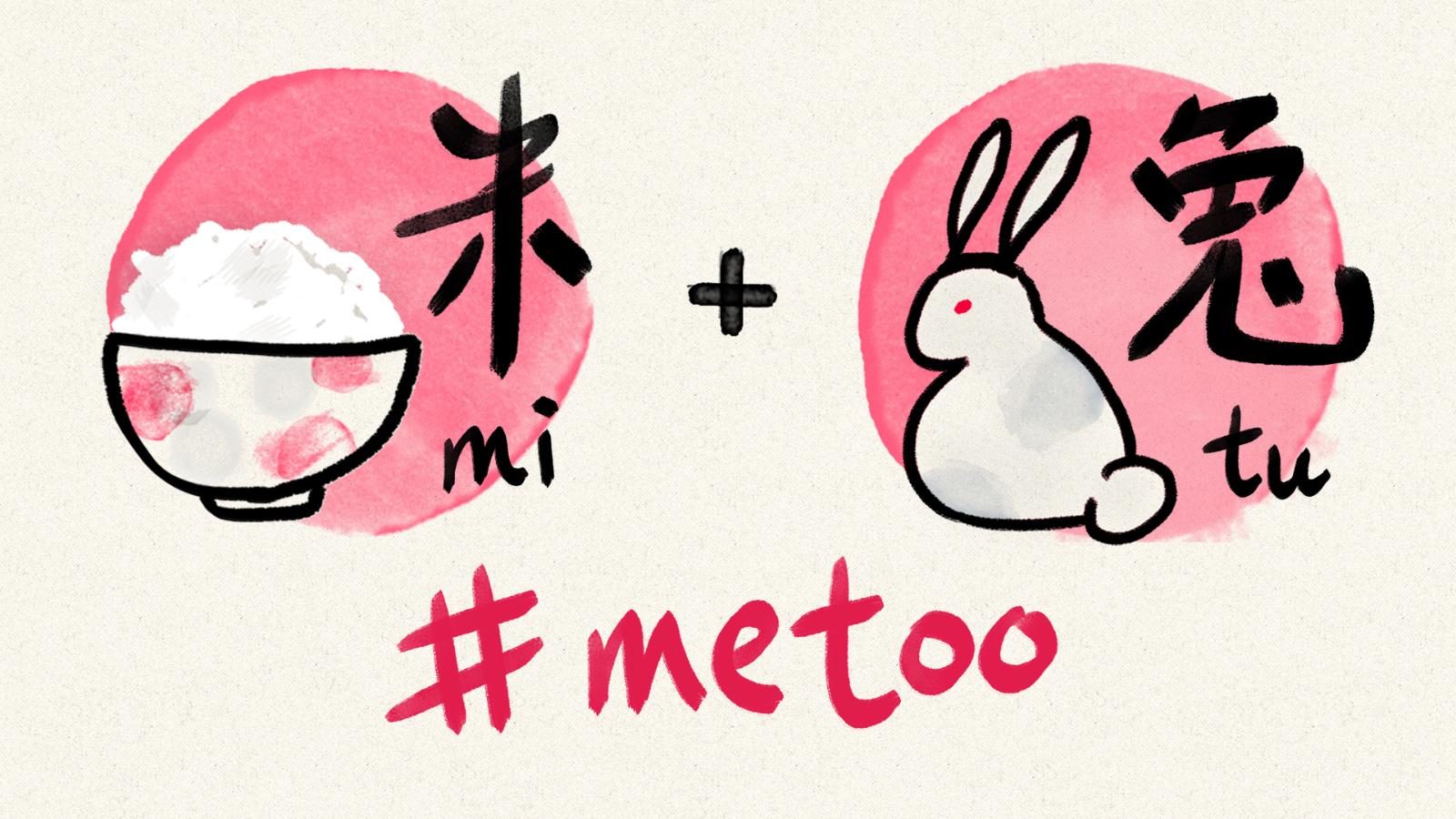
How would you characterize the development of the #MeToo movement?
The 2018 #MeToo movement in China can be divided into three different phases. The first phase started when Luo Xixi posted her story on Weibo. After that, the movement quickly spread across the country, and became a national movement that was calling for sexual harassment policy advocacy. The goal was to convince the Ministry of Education as well as individual colleges to establish a policy and regulatory mechanism for managing sexual harassment within the higher education system. Activists organized a mass petition that generated over six thousand signatures from students and online supporters. This phase of the movement was actually relatively organized in its advocacy and tone. One of the biggest outcomes of this work was the Ministry of Education publicly promising it would consider taking steps to establish an institutional mechanism for preventing sexual harassment. But this phase of the movement ended in March of 2018, around the time when Feminist Voices (女权之声 nǚ quán zhī shēng) was forced to close. This was because so many of the organized feminist advocacy groups taking the lead on advocacy efforts were being attacked and slandered.
However, the #MeToo movement itself was far from over. In April of 2018, activists began focusing on individual colleges like Peking University and Renmin University, calling on them to address both specific cases against professors as well as establish their own sexual harassment mechanisms. Over the course of this second phase, the pattern that emerged is that some colleges did begin addressing some of the more egregious cases of professors harassing students. In addition, as part of this same phase, colleges like Peking University publicly announced that they would create mechanisms to prevent and investigate sexual harassment claims. While there was some progress made, to date there has not been a concrete result. Further, as the schools began to put off making any actual progress, the police also started to become involved in these university-based cases and investigations by harassing and threatening students. Because of the bravery and resilience of these students, the #MeToo movement gained greater visibility and started to really attract more people’s attention. For example, the struggles of Yue Xin 岳昕 at Peking University represent the struggles of many young activists across China. But iltimately the second phase of the movement ended with the harassment and intimidation tactics of students in May 2018.
“The greatest success of the #MeToo movement is that, to an unprecedented extent, it put the issues of the feminist rights movement in the public view. It sheds a fresh light on women’s rights and experiences and made them a topic of public discussion.”
There was a sudden revival of the #MeToo movement in late July 2018, the third phase. Whereas the second phase mostly involved students based at universities, by the time of the third phase, the movement had already built itself up enough to go beyond. This period featured many influential, public figures sharing their individual stories of sexual harassment. So, for example, you had people coming forward about sexual harassment cases from diverse fields like public interest organizations, media, and art and culture. Because these individuals were so prominent, many more people across society started paying attention. Sexual harassment became a mainstream issue — although mass media organizations were basically not reporting on the issue. Actually it was volunteers who were willing to help and provide support. They were able to work online to keep circulating and re-posting content that was being deleted.
One of the drawbacks of this phase is that there were no resolutions on a legal level available to the women who were coming forward. So although these cases were going viral online, the survivors had no way of accessing justice. They were paying in full the price of coming forward, and seeing no resolution to their problems. By the end of 2018, everyone was feeling quite downhearted about the movement.
However, that was far from the end. There are still new developments all the time. Starting in April 2019, for example, with the Liu Qiangdong case, #MeToo was revived as a result of the incredible popular attention on the topic. Over 18 million people reacted online to the “I’m not a perfect victim” hashtag. Even so, over time, it became difficult to maintain this level of attention because of censorship. So many items were getting taken down. But now it’s still hard to say that the movement is over. There’s always new information, and youth supporters have been steadfast in spite of the obstacles. Even more important, these supporters have in some cases begun doing lots of work through “self-organization” (自我组织, ziwo zuzhi). This is a major change compared to the state of feminist advocacy before January 2018. Because of this decentralized activism, #MeToo can start up and continue from anywhere, at any time.

An anti-sexual harassment poster made by Henyou Xi’an 很有西安
Is it possible, or even desirable, to solve the problem of sexual harassment through the Chinese legal system?
Actually, we’ve already seen a few developments in the area of legal reform trying to more effectively address the problem of sexual harassment. For example, the Supreme People’s Court produced new guidance late the year before last holding that sexual harassment would be formally recognized as an acceptable “cause of legal action”. This is crucial because in China if your case does not have an accepted and recognized cause of legal action, the court will simply not accept it. Also, it’s looking like it may be possible to include certain legal issues relevant to combating sexual harassment in the new Civil Code, which is currently undergoing revision. I want to emphasize these really, really significant developments. It can be so hard to see any kind of justice — no matter if you are talking about a criminal or civil case. The court just might refuse to file it in the first place, or even if it does, the process is so long and involves so many obstacles.
But that being said, it’s still necessary to push the legal system to respond better to sexual harassment issues. If you don’t go through the legal channels to resolve a case, there is no way for you to receive an open, fair result. Society also has no way of addressing the abuse of an alleged harasser without a formal legal response. Not only that, but harassers are also left to continue their abusive behaviors without punishment or rectification — and society further suffers as a result. So law is incredibly important.
In your view, what are the highlights of the #MeToo movement in China?
The greatest success of the #MeToo movement is that, to an unprecedented extent, it put the issues of the feminist rights movement in the public view. It sheds a fresh light on women’s rights and experiences and made them a topic of public discussion. So in this respect, the #MeToo movement has already been successful in one of its main objectives: Raising public awareness of feminist issues. Before the #MeToo movement, while there was discussion of some of these topics, it was nearly impossible to get them on any kind of public agenda, let alone a policy agenda. So this is already a massive success.
“Through #MeToo, activists were able to say to the world, ‘The Chinese government is very powerful, but even it can’t shut us all the way down.’ The people still have a voice, and can still resist.”
Another highlight is the involvement of youth in the #MeToo movement. Through this movement, young people–and especially young women–were able to find their voices and to learn how to be activists. They suddenly had hope. This is especially important as public space in China is being shut down, more and more severely. Space for discourse is more controlled, and more quiet, than it has been before. The #MeToo movement allowed for some breakthroughs to be made. The movement persisted in the face of censorship and intimidation. Through #MeToo, activists were able to say to the world, “The Chinese government is very powerful, but even it can’t shut us all the way down.” The people still have a voice, and can still resist.
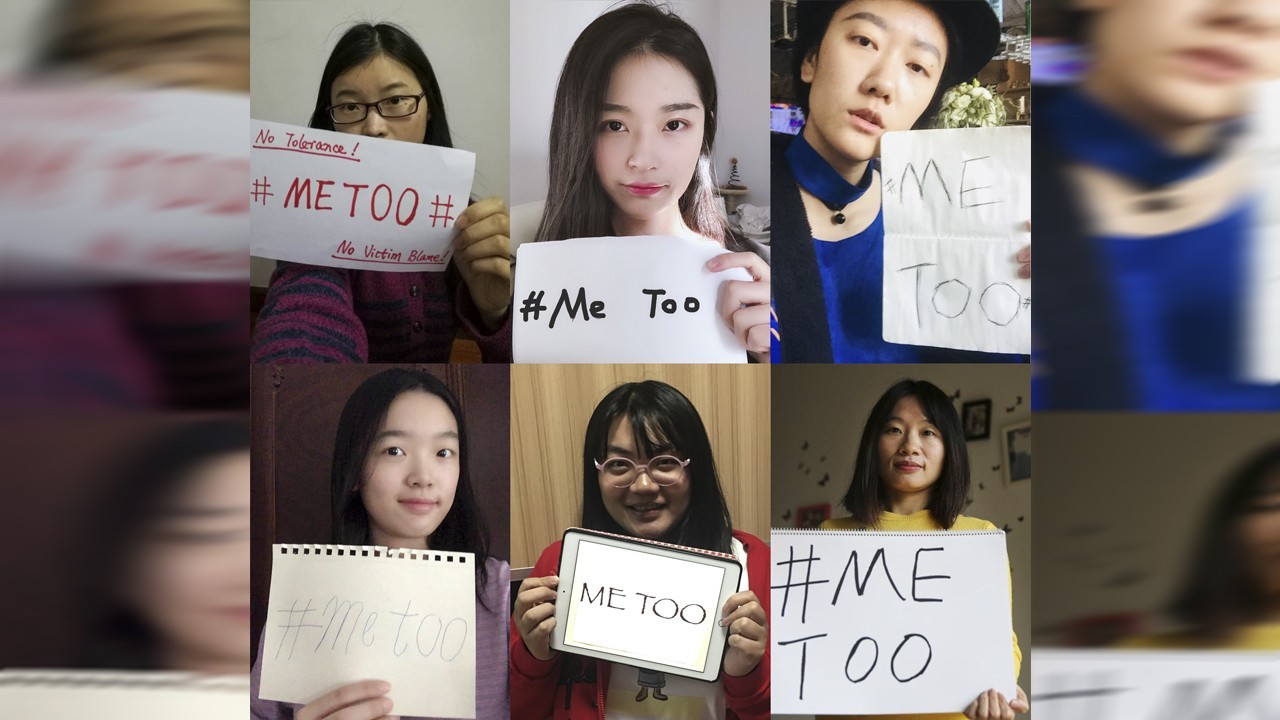
What are the main challenges facing the #MeToo movement?
The biggest obstacle is censorship. Fighting the constant deletion of content was an exhausting expenditure of effort for the #MeToo supporters. Actually interfering with the #MeToo petitions that were being circulated, for example, were well outside the government’s rightful authority. But there was still censorship, to the extent that supporters were forced into the position of opposing the government. This was far from the young people’s intentions. They just wanted action to be taken against the problem of sexual harassment. When the government put itself in the position of denying people even their right to report cases of sexual harassment through censorship, they essentially forced a standoff.
The other problems that became evident in the #MeToo movement is the lack of resources for both the #MeToo activists and the survivors themselves. This makes planning and implementing activities very difficult. There are also as a result very few social services. Survivors of sexual harassment have a very difficult time getting help that they badly need. So the #MeToo movement was forced to find ways to support itself, with everyone relying on what they had to contribute. But this kind of voluntary help isn’t sustainable. Moreover, it exacerbates yet another problem frequently faced by Chinese women: unpaid labor. #MeToo activists, like other social activists, are mostly women, and here they were being asked to contribute yet more labor and emotional work without any compensation.
In addition, because the movement was so decentralized and lacked a core organizer, there was no way to come up with a coordinated response to the dual problems of the government attacks or the lack of resources. Any response to the attacks was without strategic purpose. So although the decentralized activism allowed for a broader, inclusive movement, another problem naturally emerged with this method: There was no collective agenda. There wasn’t a clear set of goals. There was also a capacity problem. You would have people coming forward with their stories of sexual harassment, and it would be clear they would need counseling or other services, but there was no one who could coordinate that kind of support. The self-organizing element of the movement was therefore also a limit to what the movement could do.
“Liu Qiangdong’s case illustrates some of the core elements of male chauvinist thinking. His wealth also adds another layer to the discourse — many people will defend him just because of the obsession with wealth in Chinese society, and indeed, they have done so. But others have called this out and the discussion continues.”
How have activists and others based outside of China gotten involved?
The #MeToo movement is essentially an online movement. Most of the activities took place online, with the exception of some of the activities at schools. This is in part because carrying out offline activities in the current political environment in China is very difficult. So there was a lot of learning done through this movement about how to ensure people’s voices were heard online, and how to do online activism. But despite these challenges, as a result, this was a movement without geographic borders. As long as you had Weibo or WeChat and could communicate in Chinese, you could participate. Also, when the #MeToo movement was particularly active, there was 24-hour activity — and this was a result of having overseas Chinese involved. Further, the overseas communities were not as subject to censorship. For example, during the first stage of the movement when students were collecting signatures for the mass petitions, about four thousand of those signatures were from overseas. How did this happen? These signatures were collected through a Google form, which is of course blocked in the mainland. There were two channels, the Google form and those collected through WeChat inside of China.
Participating through WeChat also had its risks. If schools knew you were involved in the movement, they might threaten you with exposure. Overseas participants didn’t face this kind of intimidation or censorship. Especially in the latter half of the movement, when censorship was intensifying, the value of the overseas community really became apparent.
Are there intersections between the #MeToo movement and other movements in China, for example, the LGBT movement or the labor rights movement?
There are many barriers to integration of activists working in different areas. The Chinese government pays very close attention to this kind of collaboration. Also, if you want to connect with other communities and activists, you need resources and effort to be dedicated to that kind of outreach. Practically speaking, those are both significant barriers to coordination across movements.
There has been crossover, however. For example, there was a female worker at Foxconn who participated in the #MeToo movement who widely circulated her letter with recommendations for the company to establish an anti-sexual harassment system. Ordinarily, crossover between feminist and labor activists is very closely monitored by the government, and with very few exceptions this kind of content is deleted immediately.
As for the LGBT movement, especially after the government made concerted attacks on their online activities in 2018, there has been some coordination with the #MeToo movement. In fact, there are many people who have participated in both LGBT and #MeToo activism. The LGBT movement itself has also had some internal #MeToo incidents. Overall, however, the purposes and goals of these movements are different. Combating sexual harassment is not a key element of the LGBT activism platform, which is more focused on securing legal rights and recognition for LGBT people. There is a lot that feminist and LGBT activists have in common and can work together on.
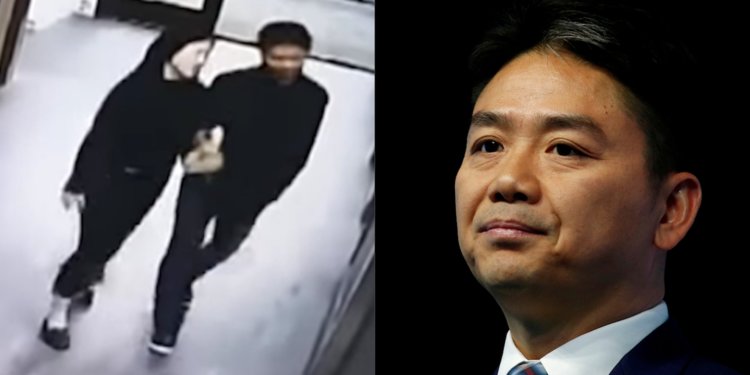
To what extent is the Liu Qiangdong case a typical #MeToo incident? Is there anything different about the way this case has been seen by the online community?
The Liu Qiangdong case is an extension of the #MeToo movement in that it involves a survivor of sexual assault coming forward and telling her story. It differs in the way people online have responded for several reasons. First, Liu Qiangdong is an incredibly wealthy and powerful figure, so of course there is going to be huge amounts of attention focused on this case. Second, Liu Qiangdong has a huge interest in keeping his accuser silent–simply having his case discussed is bad for him. So he has been very active in attacking his accuser and attempting to reclaim the narrative. Mostly, however, these efforts have backfired. From a feminist perspective, it’s a victory just to have people discussing the dynamics of the Liu Qiangdong case regardless of whose side is speaking. Liu Qiangdong’s case illustrates some of the core elements of male chauvinist thinking. His wealth also adds another layer to the discourse — many people will defend him just because of the obsession with wealth in Chinese society, and indeed, they have done so. But others have called this out and the discussion continues.
What are the next steps in the #MeToo movement?
No one knows. There’s no central plan. Because of the way the movement has been organized, it’s basically random. That may not be the best for the movement, but that’s the reality. #MeToo is not over; there is still potential for other cases to come to light. But no one knows when or how that will happen.
“In 2012, our influence was very small, maybe 100 people. But in 2019, we’re talking about a reach of over a million people. Most people still disagree with us, but overall, the discussion is happening on a much greater scale. This will make all the difference, and this is where the success of the #MeToo movement lies.”
How would you characterize the use of social media tools in this movement?
Because offline activism is controlled so tightly by the Chinese government, people have had no choice but to turn to the internet to engage in activities. On one side, this allows for many, many people around the world to participate and spread information. On the other, this means that government censorship poses a huge threat to such work. In the context of the #MeToo movement, then, there were two main social media tools: Weibo, which allowed broad outreach; and WeChat, which created private groups and more direct channels of communication between supporters. Both were necessary and complemented each other in the #MeToo movement. Censorship was there, but there were ways to move around it with the right use of the right tools.
Looking forward, as other survivors consider coming out with their stories, censorship is still a major and terrible obstacle. The threshold for being able to get your story out there is very high. You need to get your story out to a mass critical audience in order to have any hope of your story simply disappearing in one or two days. There is also the problem of online violence. Male chauvinism is alive and well on the Chinese internet. Some of this content is spontaneous, and some of it receives official support. The end result of all of this is that many supporters are afraid to discuss their experiences or feminist thoughts online, because of all of the online violence.
How has public response to the #MeToo movement evolved over time?
In 2012, when we first began introducing the problem of sexual harassment, only about 20% of people would agree with us that it was a problem — by far the majority of people disagreed with our position that it was a legitimate problem. In 2019, this ratio has basically not changed: The majority of Chinese people probably still disagree with us. So what has changed? In 2012, our influence was very small, maybe 100 people. But in 2019, we’re talking about a reach of over a million people. Most people still disagree with us, but overall, the discussion is happening on a much greater scale. This will make all the difference, and this is where the success of the #MeToo movement lies.

